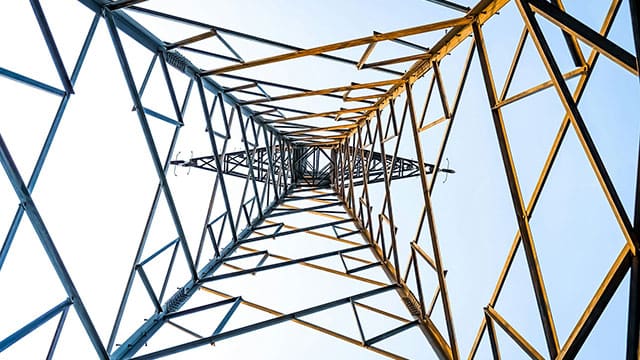Alberta deregulated its energy market in the 1990s, but the move has failed to deliver on promises of greater efficiency and lower prices

For interview requests, click here
Alberta’s government has made some stupid and costly mistakes over the years. Few have had more of an impact on your wallet than its wrong-headed experiment with deregulating the energy market.
Alberta became the lone wolf – or should we say guinea pig? – when the Progressive Conservative government of Ralph Klein introduced energy deregulation way back in 1996 and deregulation of energy generation in 2001. It remains the only province with a fully deregulated energy market. The idea was that competition in electricity generation would boost efficiency and lower prices.
Things haven’t worked out that way. In fact, the result has been quite the opposite.
Alberta’s electrical rates have gone from being among the lowest in the country to the highest, and the system is so unstable that the province had to declare an emergency grid alert in January when the system neared blackout status.
Meanwhile, homeowners, farmers and industries have had to endure punishing and wildly fluctuating rates that have, at times, soared to more than 30 cents/kWh, although prices have moderated in recent months. Meanwhile, British Columbia (which, in fairness, has a lot of hydropower) enjoys 11 cents, and Saskatchewan, which, like Alberta, produces much of its power by burning fossil fuels, 19.9 cents.
Hydro-heavy Quebec, meanwhile, pays just 7.8 cents for its electricity, and Ontario, which has had its fair share of troubles with nuclear energy, pays 14.4 cents.
Even Mike Law, Alberta Electric System Operator (AESO) chief executive, admits things are working very, very badly in this province.
“It is apparent that the status quo is not sustainable, and we need to act now to restructure our energy market so it can meet our current, but also our future needs,” he told a conference back in March. In common parlance, Law is saying our electricity market has become a steaming, fetid pile of poo.
Law said a planned overhaul is to be delivered by … fall. (Hmmm. It’s November, isn’t it?)
While the AESO works on a long-term plan, the province introduced interim changes in July that will last until 2027. These measures set rules to limit “economic withholding” by large natural gas electricity generators – a practice where power producers intentionally hold back some of their supply to drive prices higher.
It’s not hard to realize that the so-called Alberta Advantage – low taxes and all that – is not nearly as big as the marketing folks would like you to believe.
A report prepared by regulatory economist Edgardo Sepulveda for the Alberta Federation of Labour (AFL) released last week lays out just how grim our electrical system has become. Here are just a few points from Sepulveda’s report.
- Since the province deregulated power generation in 2001, the price of electricity in this province increased by an average of 1.8 per cent more per year than rates in Canada as a whole.
- Based on those rates, Albertans have paid about $24 billion more for their electricity since 2001 than had they paid the same prices as other Canadians.
- Alberta homeowners and renters paid an average of about $690 per year more per household than Canadians overall.
- Alberta’s industrial, commercial, and farm electricity customers paid about $17 billion more than their peers in other provinces since 2001.
Surely, you might expect, all that extra money will have made our electrical grid more robust. Sadly, the opposite is true. Sepulveda’s report found that since 2022, the province’s grid has been responsible for about 35 per cent of emergency alerts in Canada and the U.S. when blackouts are imminent or in progress.
There are many flaws in Alberta’s for-profit, deregulated system. For one, it pays generators only for the power they dispatch onto the grid and pays nothing for standby generating capacity. With such a disincentive, for-profit companies have responded by not investing much in standby capacity.
Meanwhile, the province has begun to actively discourage renewable energy projects.
First, it “paused” all renewable projects for seven months while it studied policy changes. Then, in February, the province announced it would create 35-km “buffer zones” around protected areas where wind turbines will not be permitted. It will also limit new renewable development on prime agricultural land unless the developer can show that farming and livestock can coexist with renewables built on the site.
Investors have gotten the message that renewables are not welcome here. Energy analytics firm Enverus Intelligence Research has identified 43 planned renewable energy projects in Alberta that could be “at risk” because of the regulations surrounding new wind and solar developments. Alberta is rapidly losing its status as a leader in renewable energy generation.
Some of the hostility to renewables is rooted in the United Conservative Party (UCP) government’s desire to mollify rural voices who are (rightly) concerned about the intrusion of turbines and solar panels on farmland. But, perhaps more significantly, the province is operating in an energy market designed more than 20 years ago, when coal plants provided 80 per cent of supply in the province, and there was an expectation that competition in the market would increase. Instead, as the Canadian Climate Institute notes, renewables have provided much of the additions in supply. In effect, the push to achieve net zero emissions has undercut the deregulated approach.
There are two possible paths out of this mess – a refined version of the more-of-the-same approach or a return to an at least partially regulated market.
The AESO is proposing the first option: a restructured energy market (REM). Its report details short-, medium- and long-term strategies. The way I read it, the AESO is doubling down on the privatization approach. The report states:
“The AESO remains steadfast that a competitive, market-based structure for wholesale electricity is the best means of promoting continued investment in the province, ensuring affordability through competitive outcomes, and delivering on Alberta’s long-term supply adequacy and reliability needs.”
Hmmm. Spoken like true believers. It seems that 23 years of experience isn’t enough to shake their confidence in deregulation.
Sepulveda’s report for the AFL could be characterized as more radical. It proposes that the province admit that it made a huge mistake lo those many years ago and build a new, regulated market. It proposes establishing a provincially owned Crown corporation, Alberta Power, which could own and operate distribution, transmission and generation assets and, as with other generation entities, would be subject to regulation by the Alberta Utilities Commission.
Detractors to the AFL’s plan say that a move to such regulation would be costly and unworkable. And it’s fair to note that a labour organization has an agenda that includes union jobs for more workers.
That’s why sorting out what is best for Albertans gets so complicated. If only we could set aside warring ideologies and look for a model that just makes common sense, maybe we could one day hope to return to an affordable and reliable supply of electricity.
It starts with being willing to think out of the box and letting go of the almost religious belief in the free market. Regulation of the electrical market is an option that should be on the table.
Doug Firby is an award-winning editorial writer with over four decades of experience working for newspapers, magazines and online publications in Ontario and western Canada. Previously, he served as Editorial Page Editor at the Calgary Herald.
Explore more on Alberta politics, Smith government, Energy security, Energy poverty
Troy Media
Troy Media is committed to empowering Canadian communities by providing independent, insightful analysis and commentary. Our mission is to support local media in building an informed and engaged public by delivering reliable content that strengthens community connections, enriches national conversations, and helps Canadians learn from and understand each other better.


Infrastructure is an issue throughout Canada not just Alberta. BUT Alberta needs to step up & get things done in an efficient & cost effective manner.
SO: If regulation is so great, then I would assume maintenance & upgrades will be done in efficiently & cost effectively. The issue in my mind is: When has government EVER BEEN EFFICIENT AND COST EFFECTIVE? I believe this was the reason that deregulation was implemented.
So what went wrong? Were there things that were not implemented that should have been under the rules & regulations? Are the companies greedy? If so, what can the government do to rectify this “greed” which may be a better alternative to “regulation.” Competition is far better than “regulation” so what went wrong? Competition usually works so is there collusion involved between companies? I want answers to these questions before any major changes are made.
So from what I’ve read here, it really doesn’t matter if it’s private or government owned, Albertans cannot rely on a cost-effective & efficient system. That’s what I’m getting from this. Is regulation really the solution?
I’d like more information on Saskatchewan’s power and how being regulated government has managed to keep the price low. How is the maintenance of the power grid going there? It’s great that the power is cheaper but how reliable is it? If everything is kosher in SK how can Alberta learn from them & possibly implement the way they do things there.
Bottom line is that government isn’t necessarily the answer to everything but they are supposed to be the arbiter of of those companies to ensure they’re doing what they’re supposed to do: provide power as cheaply & effectively as possible and if that’s not happening, why isn’t it & what are they prepared to do about it OR lose their licenses. Easy peasy!